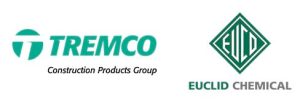
In Southwestern Ontario, Canada, there’s a big project called the Ojibway Wildlife Crossing. It’s all about helping animals cross roads safely reducing the effects of habitat fragmentation and road mortality. What’s unique about this project is that it’s using smart concrete solutions to support its eco-friendly objectives.
Concrete Plans
Concrete might not seem like it fits with nature projects, as it’s often associated with urban sprawl and environmental degradation, but in this case, it’s crucial. It helps make the structures strong and long-lasting without hurting the environment.
The Ojibway Crossing will use tough concrete to build bridges and tunnels for animals. These structures will be quite big, with spans reaching up to 50 meters stretching over highways, and tunnels reaching hundreds of meters deep underground. The concrete used will be eco-friendly, made with recycled materials to cut down on pollution, incorporating recycled aggregates and supplementary cementitious materials to reduce its carbon footprint. Advanced admixtures will enhance durability and resistance to harsh weather conditions, ensuring minimal maintenance requirements over the structure’s lifespan. All of these innovations ensure that the concrete used in this project will adhere to strict environmental standards
Now, let’s talk about the problem this project is solving.



The Challenge of Habitat Fragmentation
Habitat fragmentation is a big issue. It is caused primarily by urbanization and transportation infrastructure that break up the homes of animals. This is bad for biodiversity because it stops animals from moving freely between their habitats which leads to wildlife populations becoming isolated, gene flow being restricted, and essential ecological processes being disrupted. Roads also cause accidents, harming many animals.
This project is a team effort between environmentalists, government agencies, and local communities. It aims to reconnect animal habitats, so they can travel safely. While wildlife crossings aren’t new, the Ojibway Crossing stands out for its integration of concrete elements to enhance effectiveness, durability, and sustainability.
Creating Jobs and Empowering Communities
Besides helping animals, this project holds promise for economic growth and community development. Over 500 people will find jobs in various disciplines, from engineering and design to concrete contracting and labour. This boosts the local economy and helps community development. Moreover, by prioritizing local hiring and sourcing materials from nearby suppliers, the project aims to maximize its positive impact on the community.
The Ojibway Wildlife Crossing is a sign of hope. It shows that we can protect nature while growing our cities. By embracing concrete as a tool for sustainability and innovation, this project not only addresses the urgent need to protect wildlife but also fosters economic resilience and empowers the community to grow. As the project moves forward, it’s a reminder of what’s possible when we work together and when vision, collaboration, and concrete solutions unite.

